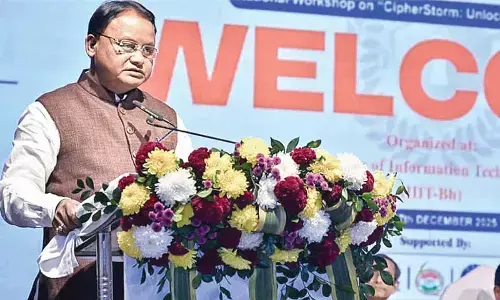Fading Melody of Proverbs

Proverbs, idioms, and phrases are essential tools for effective communication.
Proverbs, idioms, and phrases are essential tools for effective communication. They are concise, efficient, and culturally connected, allowing for the expression of complex ideas in a catchy way. They also enhance lively communication by adding humor and informality to speeches. They are commonly used in everyday conversations, creative writing, and social media. For instance, a hindi idiom “kaanon par haath ferna” (turn a deaf ear), Chattis ka Aankada (waging swords against each other).
Proverbs/idioms/phrases can also be used in fiction or poetry to add layers of meaning or evoke emotions in the reader. Moreover, many idioms and proverbs have been adapted into memes or online slang, showcasing their enduring relevance. Understanding and effectively using these phrases can make you a more well-rounded communicator, but it’s crucial to be familiar with their meaning before incorporating them into your speech.
Idioms and proverbs are prevalent in Indian life, used in both formal and informal communication. India’s diverse culture, with numerous languages and dialects, reflects its rich heritage, traditions, beliefs, and values. These expressions are used in everyday conversations to convey wisdom, humor, and cultural nuances. They are also used in storytelling, literature, movies, and political discourse. Many Indian languages have a plethora of idiomatic expressions and proverbs that are deeply ingrained in society and passed down through generations. Idioms and proverbs are also used in written communication, such as literature, poetry, and journalism, adding depth and color to the language. Overall, idioms and proverbs play a significant role in Indian life, reflecting the country’s cultural richness and diversity.
The linguistic diversity of India is a treasure trove of idioms and proverbs that illuminate the cultural ethos and collective wisdom of its people. These linguistic gems, deeply rooted in tradition and heritage, serve as beacons of insight, humor, and sagacity across the vast expanse of the Indian subcontinent.
Some Telugu scholars have divided proverbs in six categories based on usability, straightforward generalizations, about people and places, sentences that ended in a funny way, imitative phrases and proverbial comparisons.
Proverbs can also be classified according to the object, writing language and rhymes. There is a huge repository of proverbs in Bharatiya languages which relate to the nature of human experiences. Theological proverbs, advice, gulps, proverbs of science, humor and soon.
(Sau sunne se ek dekhna behtar) “Seeing once is better than hearing a hundred times.”
In Tamil, (Kurai kudam thalumbum, nirai kudam thalumbaadu) meaning half-filled pot makes more noise than a full pot. (Pazhaya chunnambu kaarai sudum): This translates to “Old lime burns the wall.
In Malayalam (Kallatham ponnu pole eriyum): This proverb means “A lie burns like gold.” (Adi tettiyaal aanayum veezhum): Meaning “Even an elephant falls if it stumbles.
Punjabi’s (Siaan di gall sher di dahaad) translates to “The words of the wise are like a lion’s roar.”, Gujarati proverb says (Adhu ruvaiyu to ghado bharay nahi) which means “A half-hearted attempt won’t fill the pot.”
Across the vast expanses of India, from the deserts of Rajasthan to the tea gardens of Assam, idioms and proverbs serve as the threads that weave together the diverse tapestry of Indian culture. They transcend linguistic barriers, resonating with audiences far and wide, and embodying the essence of what it means to be Indian.
Exploring the rich cultural tapestry of South India unveils a plethora of idioms and proverbs, each resonating with the essence of the region’s history, traditions, and values. In Tamil Nadu, the land of ancient temples and classical literature, idioms such as (Kaṇṭaṟiyum kaṟṟaṟital)emphasize the importance of practical knowledge and the continuous process of self-discovery.
In the bustling streets of Chennai, the serene backwaters of Kochi, or the majestic ruins of Hampi, the echoes of South Indian idioms and proverbs resonating across the world are a testament to the resilience, creativity, and collective spirit of Bharat.
Proverbs, idioms, and phrases that give flavour and depth to communication are abundant in Indian languages, which are a treasure mine of such expressions. For instance, (haathi ki daant dikhana), the literal translation of this phrase is “showing the elephant’s teeth,” which means to bluff or frighten another person. In situations when you wish to caution someone not to underestimate you, this adage packs a powerful punch.
The phrase “aankhon dekhi” is often used, which literally translates to “seen by the eyes,” is used to emphasize the significance of seeing something for the first time. Being able to declare that you have personally experienced something lends credibility to the argument that you are making.
Apna paani peena, which literally translates to “to drink one’s own water,” is an idiom that emphasizes the importance of individuals being self-sufficient and not relying on the assistance of others. Your message of unwavering independence is successfully communicated by it.
The phrase “chalte firte seekhna” denotes the following condition: In English, this phrase may be translated as “learning while walking,” which highlights the need of constant progress and learning throughout one’s whole life. Because of this, your conversation will be infused with a feeling of development attitude.
Proverbs/Phrases/Idioms enhance expression by connecting origins in the culture and traditions of the Indian people. The use of them generates a feeling of familiarity and establishes a connection between your message and a more profound comprehension. The figurative language that is used in these sayings creates a visualization in the mind of the listener, which not only makes your message more remembered but also more effective.
Proverbs/idioms/phrases that have an emotional resonance adding dimension to message and impacting the audience on an emotional level, they often generate feelings such as humour, wisdom, or caution.
These components, when included into your talks, have the potential to transform your message from one that is informed to one that is insightful and engaging. Always keep in mind that the key to successful communication is to use them wisely and in the right context.
Gen Z’s communication style may be perceived as lacking traditional proverbs, idioms, and phrases due to factors such as digital fluency, efficiency, and exposure to globalized culture. This can lead to a loss of connection to roots, erosion of shared language, and difficulties learning traditional values. However, there is hope for cultural preservation. Language evolves naturally, and Gen Z might be creating new forms of expression that preserve cultural elements. Social media trends can revive old proverbs and idioms, making them more accessible to younger audiences. Gen Z communication might prioritise themes that resonate globally, fostering intercultural understanding.
The future of culture preservation likely lies in a balance between respecting traditional forms, embracing new forms, and collaborating with elders and younger generations to translate traditional wisdom into contemporary forms. By embracing new forms and preserving core values and cultural identity, Gen Z can ensure cultural continuity and adapt to the changing landscape of communication.












